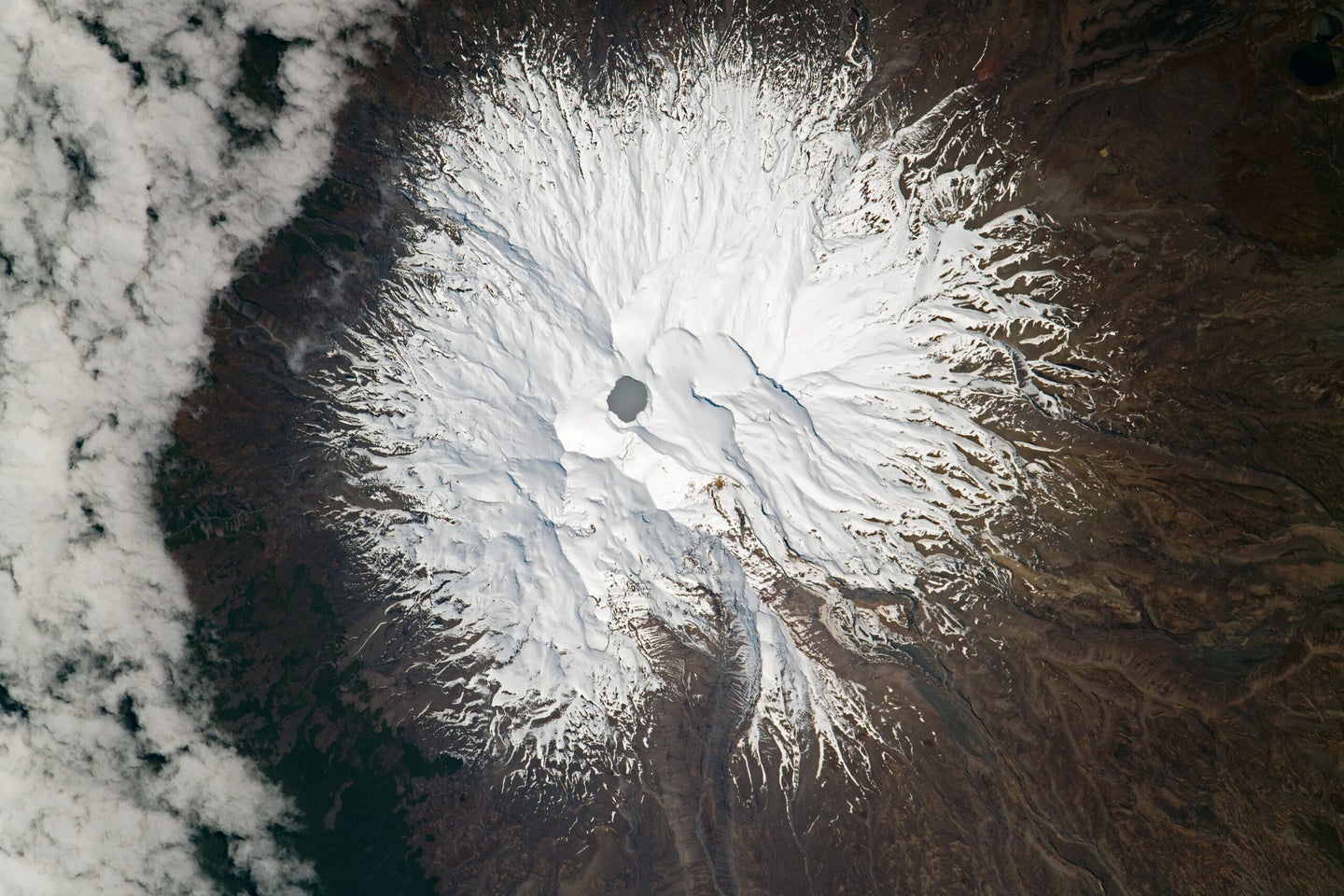You’ve seen Mount Doom in the movies, now look at it from space
The volcano still wows even without magic.

When an astronaut aboard the International Space Station (ISS) snapped an eerie photo of a real volcano atop New Zealand’s Mount Ruapehu, unfortunately no dwarves, elves, or hobbits were in sight. However, this active volcano in the center of New Zealand’s North Island was the filming location for the real-life Mount Doom in Peter Jackson’s groundbreaking “Lord of the Rings” movies.
The photo was taken on September 23, 2021, and released this week by the NASA Earth Observatory. It shows a straight down (or nadir) view of the mountain and Tongariro National Park. According to the Earth Observatory, Ruapehu is an active stratovolcano that is 9,177 feet (2,797 meters) tall at its highest point, making it the tallest mountain on New Zealand’s North Island. Stratavolcaoes are often considered the most picturesque for their slopes, but are also the most deadly. Some other well known stratovolcanoes include Japan’s Mount Fuji, the Mayon Volcano in the Philippines, and Guatemala’s Mount Agua.

[Related: Geologists: We’re not ready for volcanoes.]
Near Mount Ruapehu’s summit lies Crater Lake (Te Wai ā-moe). It’s heated by hydrothermal system within the volcano, so it remains warm all year (roughly 50 to 113 degrees Fahrenheit) and is highly acidic. Crater Lake is the only geologically active part of the stratovolcano that is visible at the surface, and changes in both the lake’s water temperatures (mostly increases) and gas emissions can signal impending volcanic activity.
Ruapehu was dormant from 2011 until some volcanic unrest was reported in March of this year. Moderate tremors led volcanologists in the area to issue an alert about heightened volcanic activity, and they monitored Crater Lake’s temperature and sulfur dioxide emission samples. In May, the water temperature peaked at a balmy 104 degrees Fahrenheit (40 degrees Celsius), but cooled down to a more pleasant 75 degrees Fahrenheit (24 degrees Celsius). By July, both temperatures and emissions dropped enough to lower the alert level.
[Related: How to study a volcano when it destroys your lab.]
In addition to the steamy, sulfur-filled crater keeping things interesting, a magmatic intrusion was detected beneath the volcano during this period of volcanic unrest. This suggested to scientists that magma was rising slowly under the volcano between March and June, but had since stopped. Due to the magma rising, scientists hypothesized that the likelihood of an eruption may have increased within the Crater Lake basin.
Other areas of Tongariro National Park including Tawhai Falls and Rangipo Desert were also used to create the sinister realm of Mordor in the epic fantasy films.
